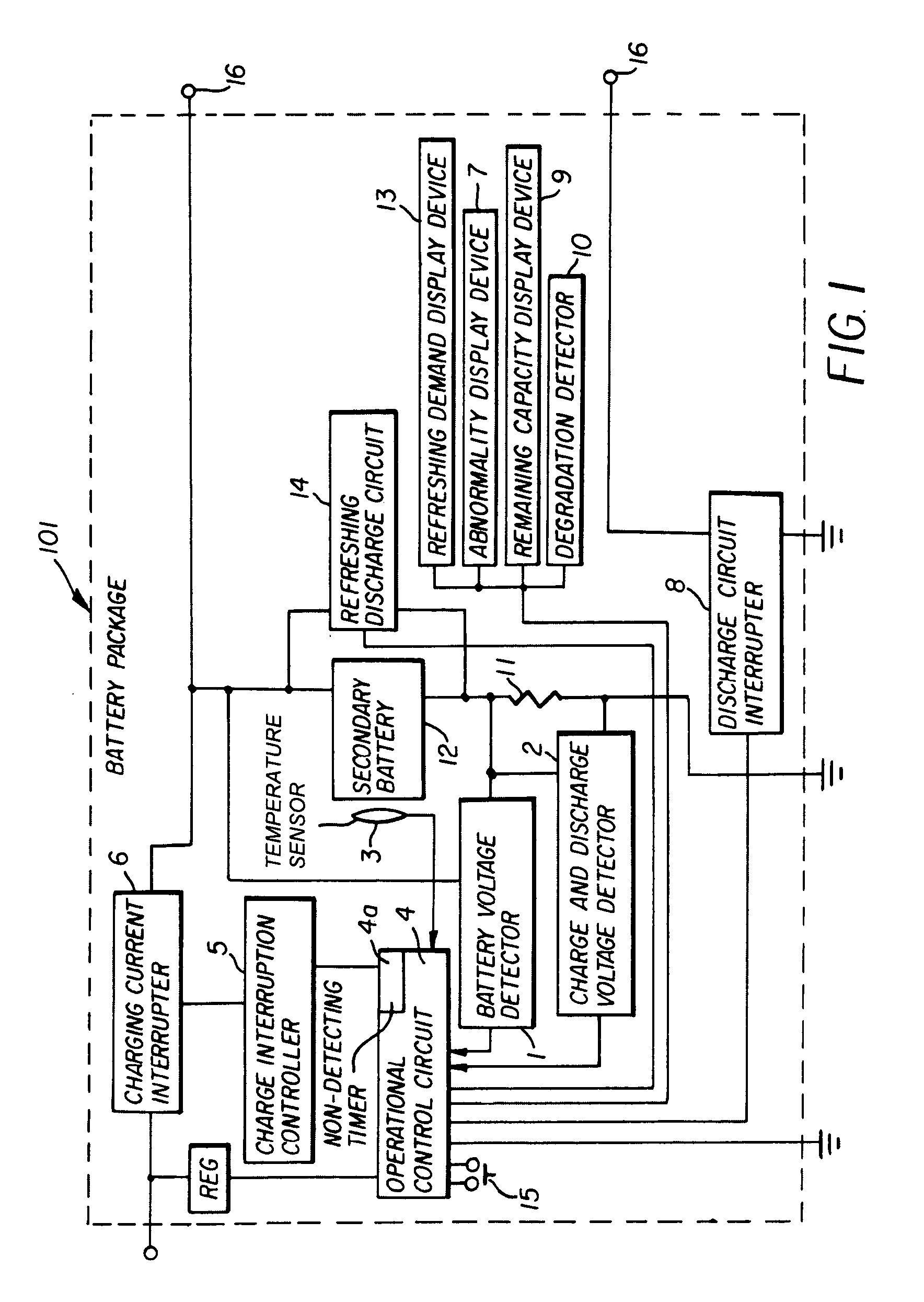Battery pack and method of charging and discharging the same
a battery pack and battery technology, applied in the field of batteries, can solve the problems of battery reducing, battery unable to maintain a sufficient capacity, battery voltage decreasing, etc., and achieve the effects of shortening the service life of batteries, accelerating the degradation of batteries, and reducing the reactivity of electrodes
- Summary
- Abstract
- Description
- Claims
- Application Information
AI Technical Summary
Benefits of technology
Problems solved by technology
Method used
Image
Examples
Embodiment Construction
[0027]Referring to the accompanying drawings, description will be provided hereinafter of a battery package equipped with a secondary battery and a method of carrying out refreshing charge and discharge according to a preferred embodiment of the present invention.
[0028]Shown in FIG. 1 is a block diagram of a battery package for use in connection with the following discussion of a method of displaying a capacity used for the refreshing charge and discharge of the secondary battery according to the present invention. In FIG. 1, packaged battery 101 (may also be called “battery package”) contains battery voltage detector 1 for monitoring a voltage of secondary battery 12 constituting the packaged battery 101, charge and discharge current detector 2 for detecting an electric current across shunt resistor 11 connected to secondary battery 12 and determining whether the battery is being charged or discharged, and a number of sensors such as temperature sensor 3 made of a thermistor or the...
PUM
| Property | Measurement | Unit |
|---|---|---|
| discharge voltage | aaaaa | aaaaa |
| voltage | aaaaa | aaaaa |
| voltage | aaaaa | aaaaa |
Abstract
Description
Claims
Application Information
 Login to View More
Login to View More - R&D
- Intellectual Property
- Life Sciences
- Materials
- Tech Scout
- Unparalleled Data Quality
- Higher Quality Content
- 60% Fewer Hallucinations
Browse by: Latest US Patents, China's latest patents, Technical Efficacy Thesaurus, Application Domain, Technology Topic, Popular Technical Reports.
© 2025 PatSnap. All rights reserved.Legal|Privacy policy|Modern Slavery Act Transparency Statement|Sitemap|About US| Contact US: help@patsnap.com



